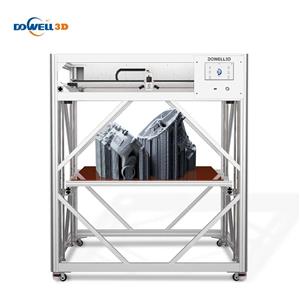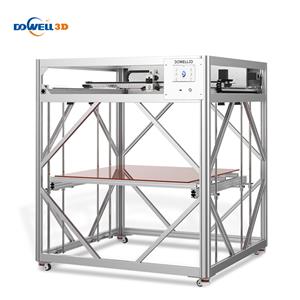What is the difference between a 3D printer FDM and a SLA?
FDM technical advantages
The FDM 3D printer has a larger build size than the SLA printer. In addition to prototyping and printing large-size, practical parts and models, it can also perform small-batch manufacturing tasks. A single type of 3D printing material generally has low resistance, low friction, high strength and certain anti-corrosion properties, while composite materials generally refer to materials containing reinforced material powder or chopped fiber mixture in the main material, such as poly Carbonate and carbon fiber can print parts that are stronger, lighter and dimensionally stable. FDM 3D printing ranges from model display, small replacement parts for automobiles to tooling fixtures for aerospace companies, making it a stronger choice for objects that require mechanical functions and performance. Some FDM3D printers have high-precision printing characteristics, so that the surface of the printed parts is smooth and uniform, which can meet the general use test requirements.
FDM technical disadvantages
Conventional FDM3D printers, due to the low printing resolution, sometimes have layer patterns on the printed surface, which is also called "ribbing." This requires additional polishing and grinding of the parts to make the surface finish of the parts high. Generally, the FDM 3D printing process is also prone to temperature fluctuations, resulting in slower/faster cooling of the thermoplastic filament material and surface delamination. Common problems are faults and part warping.
In the 3D printer, multiple internal components operate at the same time during the printing process. Any problems with the print head, extrusion system or hot-end components will cause problems in the printing process. Therefore, when preparing and slicing a 3D model, you need to pay special attention to the potential impact of the printing settings, hardware and material specifications on the 3D printing model.
Light curing technology (SLA)
SLA technical advantages
SLA 3D printing can achieve a minimum resolution of 25 microns, so as to achieve a smooth and meticulous surface treatment. The surface details are unmatched by FDM and similar to the appearance of traditional injection molded parts. It is most suitable for product display or conceptual model making, organic structure, parts with complex geometric shapes, figurines and other unique product prototypes. As the UV laser is used as the data calibration component, the printing error of the SLA 3D printer is smaller. This is because there is no thermal expansion during layer fusion, making it ideal for printing high-precision models such as jewelry, medical implants, complex architectural models and other small parts.
SLA technical disadvantages
Due to the brittle nature of cured resin materials, only engineering grade SLA resin formulations can be applied to parts subject to mechanical stress or cyclic loading. In addition, most standard resins are very suitable for fine, high surface finish product models for display purposes. There is no SLA resin material on the market that compares with polycarbonate, nylon or other strong FDM materials in terms of strength and mechanical properties. In addition, 3D printing resin materials cost more. Compared with FDM 3D printers, their build size is much smaller and they are not suitable for small batch production jobs.
How to use the two technologies reasonably
FDM and SLA have their own advantages and disadvantages, and can be used to complete different tasks or combined with multi-component assembly construction. If you want to produce a demonstrative design model with a fine surface, then SLA is a better choice. FDM will be more suitable for parts manufacturing where the main requirements are from design, manufacturing to later small batch production.





